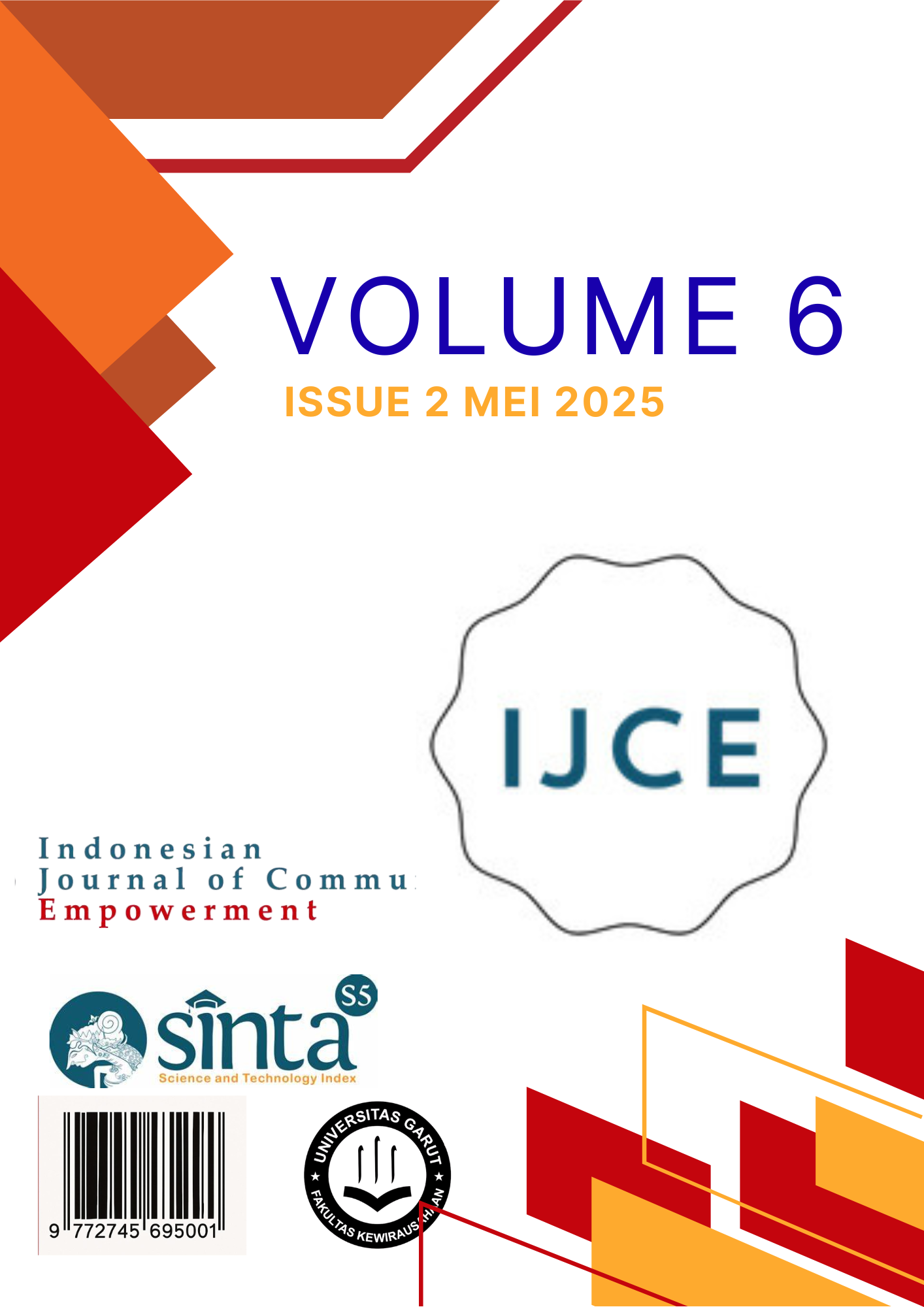Improving Elderly Knowledge on Hypertension through Health Education in Parakan Village, Garut
Abstract
Hypertension is a non-communicable disease often referred to as a "silent killer" because it may develop without noticeable symptoms and can lead to serious complications if left untreated. Elderly individuals are among the high-risk groups who require special attention in efforts to prevent and control hypertension. This community service activity aimed to improve the knowledge of elderly residents regarding hypertension through health education as a preventive measure against further complications. The program was conducted in Parakan Village, Garut Regency, involving 30 elderly participants. The method used was health education combined with pre-test and post-test assessments to evaluate knowledge improvement. The results showed a significant increase in understanding after the session, particularly regarding the symptoms and prevention of hypertension. Another notable finding was that most participants had only elementary-level education, which influenced their receptiveness to health information. In conclusion, health education proved effective in enhancing the elderly's knowledge of hypertension and its potential complications. Periodic follow-up education and collaboration with local health services are recommended to sustain the impact.
References
W. H. Organization, “Scabies,” 2023. .
I. Isramilda, A. Asda, and R. Y. Purnama, “Faktor-Faktor Yang Mempengaruhi Kejadian Skabies Di Pondok Pesantren Darul Falah Kota Batam,” Zo. Kedokt. Progr. Stud. Pendidik. Dr. Univ. Batam, vol. 13, no. 1, pp. 312–322, 2023, doi: 10.37776/zked.v13i1.1155.
N. A. Hamdani and R. N. Khalifah, “The Influence of Risk Perception on Business Model Innovation,” Int. J. …, 2023, [Online]. Available: https://journal.rescollacomm.com/index.php/ijbesd/article/view/469.
A. Zakiudin, “Perilaku Kebersihan Diri (Personal Hygiene) Santri di Pondok Pesantren Wilayah Kabupaten Brebes,” Promosi Kesehat., vol. 11, no. 2, pp. 64–83, 2016.
A. N. Hikmah, A. Kadarwati, B. Sampurmantoro, F. Sisilia, P. Pakpahan, and N. W. Krisanty, “Kebersihan Tempat Tidur dan Sprei Sebagai Faktor Resiko Scabies Di Pondok Pesantren Tashih Quran Ar-Rofi Semarang Tahun 2023,” J. Pengabdi. Masy. Bangsa, vol. 1, no. 7, pp. 1251–1255, 2023, doi: 10.59837/jpmba.v1i7.347.
K. L. Carla Florencia, “Tinjauan Pustaka : Peran Apoteker Dalam Pengobatan Skabies Di Apotek,” Farmaka, vol. 21, no. 2, pp. 53–59, 2021.
and S. W. A. Asmoro, Kurnia, “Hubungan Pengetahuan Dengan Pemilihan Obat Pada Swamedikasi Batuk Di Masyarakat Kabupaten Sukoharjo Jawa Tengah,” 2015.
Nu. N. Hasna Ibadurrahmi, Silivia Veronica, “Faktor-Faktor yang Berhubungan dengan Kejadian Penyakit Skabies pada Santri di Pondok Pesantren Qotrun Nada Cipayung Depok Februari Tahun 2916,” Pap. Knowl. . Towar. a Media Hist. Doc., vol. 10, no. 1, pp. 33–45, 2016.
D. S. Armansyah, “Gambaran Personal Hygiene Dan Kejadian Penyakit Kulit Di Pesantren Mathla’ul Anwar Dan Pesantren Walisongo,” 2020.
Departemen Kesehatan RI, “Pedoman Penggunaan Obat Bebas dan Bebas Terbatas Departemen Kesehatan Republik Indonesia,” Dep. Kesehat. Republik Indones., pp. 10–79, 2006.
G. Abdul et al., “Information Technology Resources and Innovation Performance in Higher Education,” vol. 15, no. 04, pp. 117–125, 2021.
Depkes RI, “Pedoman Penggunaan Obat Bebas dan Bebas Terbatas,” Pedoman Pengguna. Obat Bebas dan Bebas Terbatas, pp. 1–78, 2007.
M. Kurniawan, M. S. S. Ling, and Franklind, “Diagnosis dan Terapi Skabies,” Cermin Dunia Kedokt., vol. 47, no. 2, p. 104, 2020.
N. Rahmatia and T. Ernawati, “Penatalaksanaan Skabies Melalui Pendekatan Kedokteran Keluarga di Wilayah Kerja Puskesmas Satelit,” Majority, vol. 9, no. 1, pp. 1–8, 2020.
J. Liambana, “Pengaruh Penyuluhan Kesehatan Melalui Media Video Immim Putra Makassar the Effect of Health Counseling Through Video of Media on Effort To Prevent Skabies At The Pesantren Immim Putra In Makkasar,” J. Heal. Qual. Dev., vol. 1, no. 1, pp. 1–8, 2021.
E. A. Darsini, Fahrurozi dan Cahyono, “Pengetahuan; Artikel Review,” J. Keperawatan, vol. 12, no. 1, 2019.













